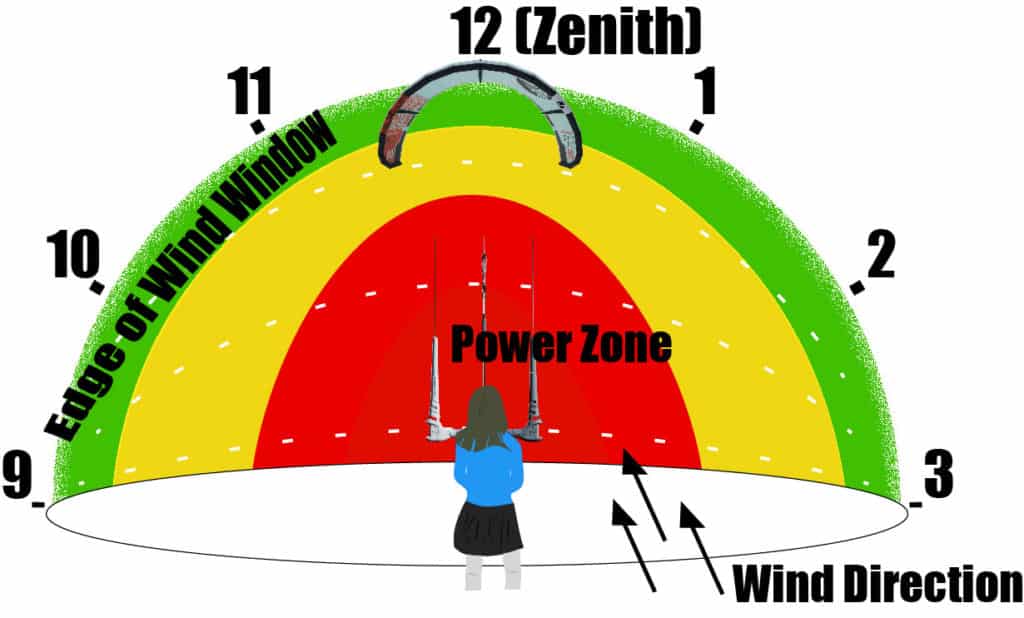Allgemein
Das Windfenster im Kitesurfen
Das Windfenster im Kitesurfen – Grundlagen für Einsteiger und Fortgeschrittene
Kitesurfen ist eine aufregende Sportart, die Elemente aus Wakeboarding, Segeln und Windsurfen kombiniert. Einer der wichtigsten Aspekte beim Erlernen des Kitesurfens ist das Windfenster – ein entscheidendes Konzept, das jede Bewegung des Kites beeinflusst. Wer das Windfenster versteht, kann die Kraft des Windes optimal nutzen und sicher sowie effizient auf dem Wasser gleiten.
Was ist das Windfenster?
Das Windfenster im Kitesurfen
Das Windfenster beschreibt den dreidimensionalen Bereich in der Luft, in dem der Kite fliegen kann. Es erstreckt sich vor dem Kitesurfer mit dem Wind im Rücken. Innerhalb dieses Bereichs gibt es Zonen mit unterschiedlicher Windkraft:
- Neutrale Zone: Hier erzeugt der Kite kaum Zugkraft.
- Power-Zone: In dieser Zone entsteht maximale Kraft, die den Kitesurfer beschleunigt.
- Zenit: Der Punkt direkt über dem Kitesurfer, ideal zum Stabilisieren des Kites.
Das Windfenster kann man sich wie eine Uhr vorstellen:
🔹 12 Uhr = Zenit (über dem Kopf)
🔹 9 & 3 Uhr = Rand des Windfensters (stabile, kontrollierbare Position)
🔹 Zwischen diesen Positionen = Power-Zone, wo der Kite am meisten Kraft entwickelt.
Die drei Hauptbereiche des Windfensters
1. Rand des Windfensters – Kontrollierte Zone
Hier ist der Kite am leichtesten zu steuern. Er schwebt stabil und erzeugt wenig bis keine Zugkraft. Das ist die ideale Position für den Start und die Landung des Kites.
2. Power-Zone – Maximale Energie
Diese Zone liegt direkt vor dem Kitesurfer. Lenkst du den Kite in die Power-Zone, entsteht starke Zugkraft, die dich nach vorne zieht. Anfänger lernen, diese Energie durch gezielte Bewegungen, sogenannte „Power-Strokes“, zu nutzen.
3. Zenit – Sicherheitsposition
Der Zenit ist die 12-Uhr-Position über dem Kopf. Hier kann der Kite stabil geparkt werden, um sich neu auszurichten oder Fehler zu korrigieren. Ein verbreiteter Irrglaube ist, dass der Kiter hier vom Wind „weggeblasen“ wird – tatsächlich erzeugt der Kite in dieser Position keine seitliche Zugkraft.
Wichtige Techniken und das Windfenster
1. Sichere Starts und Landungen
Viele Unfälle passieren beim falschen Starten des Kites. Der Kite sollte immer am Rand des Windfensters gestartet werden – nicht in der Power-Zone, um plötzliche unkontrollierbare Zugkräfte zu vermeiden.
2. Gehen gegen den Wind & Board anziehen
Um sich effizient gegen den Wind zu bewegen oder das Board anzuziehen, sollte der Kite stabil am Rand des Windfensters oder im Zenit gehalten werden. Achtung: Zu viel Bewegung kann den Kite versehentlich in die Power-Zone bringen.
3. Wasserstart – Der entscheidende Moment
Ein Wasserstart erfordert einen gezielten „Power-Stroke“, um genug Vorwärtskraft zu erzeugen. Dazu wird der Kite aktiv in die Power-Zone gelenkt.
4. Höhe laufen & Geschwindigkeit halten
Wer gegen den Wind fahren möchte, muss den Kite geschickt in der richtigen Position halten. Lässt die Geschwindigkeit nach, liegt der Kite zu weit am Rand des Windfensters. Dann hilft es, ihn wieder tiefer in die Power-Zone zu lenken.
Fazit – Warum das Windfenster so wichtig ist
Das Windfenster ist das Herzstück des Kitesurfens. Ein gutes Verständnis davon macht den Unterschied zwischen Anfängern und erfahrenen Kitesurfern aus. Wer die Dynamik des Windfensters beherrscht, kann sicher starten, kontrolliert fahren und Tricks ausführen.
🌊💨 Merke: Dein Kite ist dein Motor, das Windfenster dein Spielfeld! Mit Übung und Geduld wirst du den Wind zu deinem Vorteil nutzen und das Kitesurfen in vollen Zügen genießen.
Kitesurfen lernen, Windfenster Kitesurfen, Power-Zone Kite, Kite richtig steuern, Kitesurfen Technik, Das Windfenster im Kitesurfen

